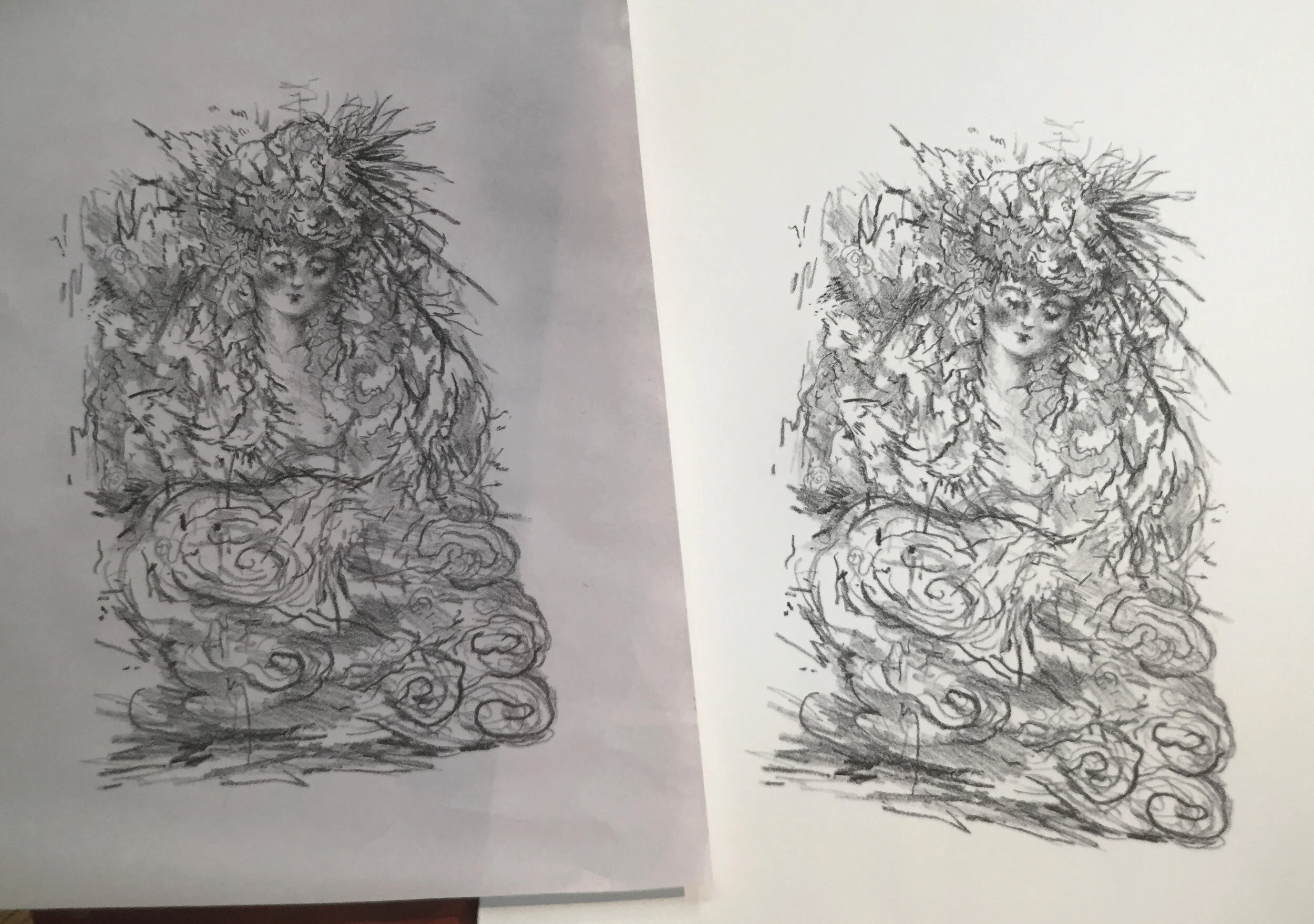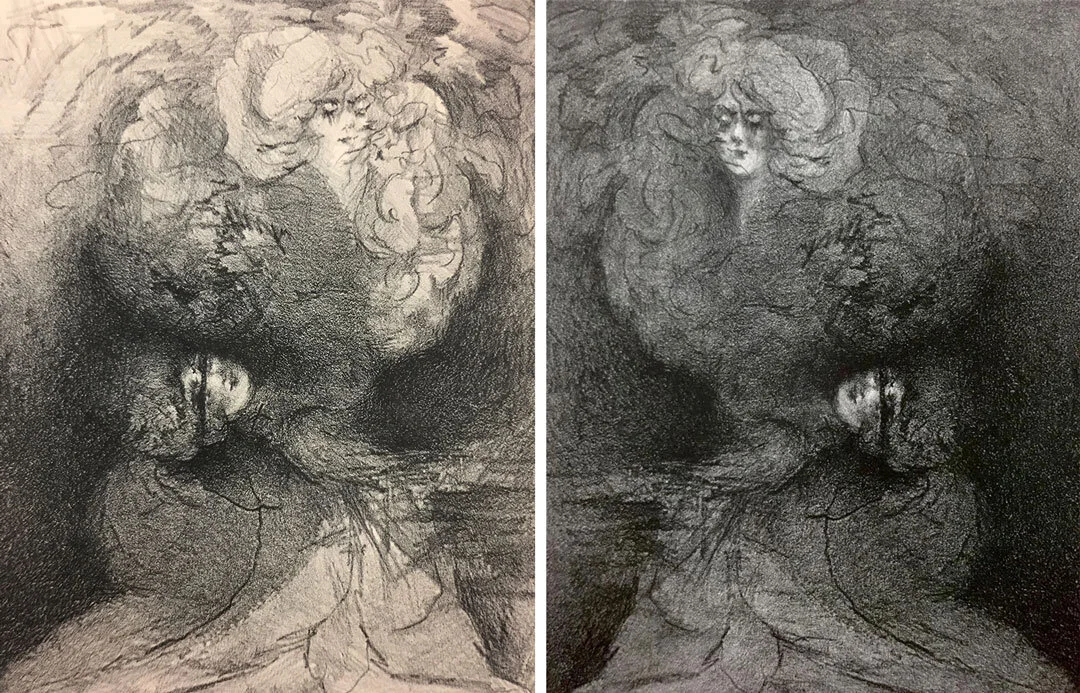The winter often tends to be the most productive time in my studio. The cold weather lends itself to burrowing, and I have the opportunity to spend many uninterrupted hours on painting.
Lately, I have been experimenting with a light application of watercolor on heavyweight drawing paper. My intention is to develop more of a relationship with movement in my pieces. I no longer have been stretching my paper, opting to work directly with a large brush and seeing where it takes me. When the page starts to buckle a bit, I slip it under a large quartro copy of Toulouse-Lautrec: His Complete Lithographs and Drypoints, and immediately start another piece. Sometimes I take a break from paper altogether and sketch digitally using Procreate. Procreate has been a really useful tool, because I can readily work out ideas without having to navigate materials (or clean up, after).
I like to change up the stylistic elements of my work (the direction of brush strokes, and colors). Generally, unifying characteristics travel between pieces, but I like to see my work as something that grows and changes with time (like a plant budding many flowers). I’m not sure exactly when my subconscious decided dreamy watercolors, gesturing towards the Fin de siècle, should be the river where I’d find repose. However, I’ve accepted the day I paint my last beribboned hat is too far in the future to matter.
Watercolor is a uniquely unforgiving medium, but I love it for it’s immediacy. I often find myself discarding page after page in forlorn experimentation of a new technique. But these discarded pages can be gems. I walk out of my studio and back, looking at a ‘mistake’, realizing that is not a mistake at all but a breakthrough.
I like to use technique and style to express a narrative. There is an introspection that overtakes the personalities I paint, which I think is further softened and made expressive by the cascading lines moving around the physical spaces of these characters. I love the harmonizing effects of lines. The trick is knowing when to stop, and consider the piece “finished.”
The two pieces shown above are more “finished” sketches that I completed on etching paper. It is significant to mention that there is a lot of texture and depth that gets translated into a piece, depending on the quality of the materials used. Etching paper, I’ve found, is very receptive to mark making and calligraphic effects while using a limited palette (particularly when using ink). However, the colors do tend to get muddy easily if one isn’t careful. I often limit my application to one or two colors. However, I am continually testing new pigments (and even brushes).
Painting is always a learning experience. I am looking forward to providing new updates of where I plan to go next in the coming months as I tackle new materials.



![(2021), Watercolor and Ink [in progress]](https://images.squarespace-cdn.com/content/v1/56ca5e07859fd07d71be46ea/1611792767899-Y5M4T81LXZ9837CXVXEA/1.27.21-robyn-tang-drawing-in-progress-web.jpg)


